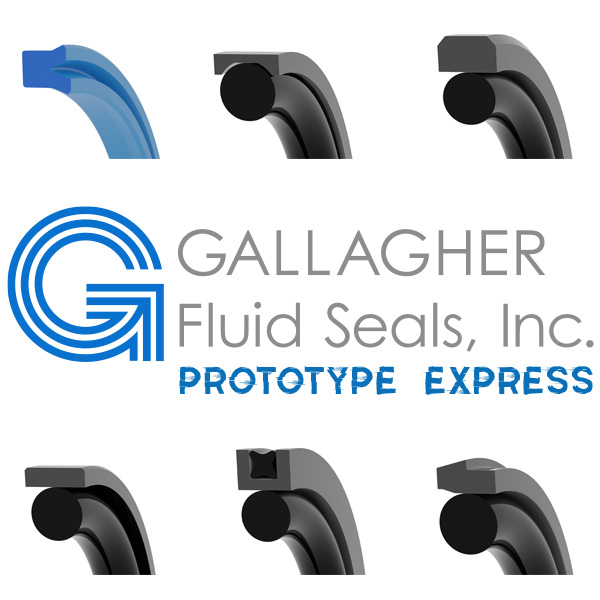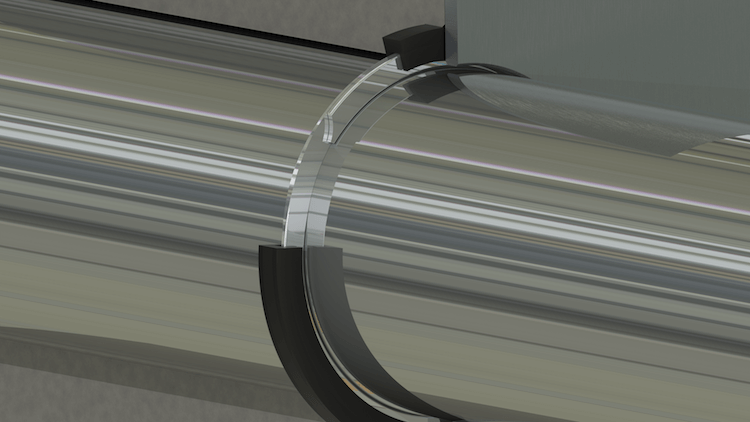PTFE Metallic Scrapers
Rod scrapers, wipers, and excluders are common place in the seal industry. A wiper or scraper can be a critical part of keeping dust, dirt, and debris out of a hydraulic system.
While a polymer scraper such as a filled PTFE can provide many years of low-friction performance, some extreme applications need a more robust and aggressive design.
The Client Sealing Issue
Our partners at Eclipse Engineering were approached by a customer using a hydraulic cylinder in a metal foundry.
Intense heat and marring media presented a challenging environment for any seal component.
The cylinder was close enough to the molten metal to get slag deposits on the cylinder rod when fully extended. Slag, a by-product of the smelting process, is often a mixture of metal and silicon oxides.
The hard and abrasive properties of the slag were pushing conventional rod wipers and scrapers beyond their limits and allowing damaging contaminates into the hydraulic system. Frequent rebuilds and service delays were commonplace.
The Eclipse Solution
The challenge was to invent a scraping system that was up to the task.
Polymer scrapers can be designed to withstand harsh environments. Dirt, rocks, and mud are usually effectively kept out of hydraulic systems by using polymer or plastic wipers.
Eclipse’s EU000 UHMW-PE is an exceptionally tough polymer that can withstand tearing, impact, and abrasion in a wide variety of situations. But even UHMW wouldn’t be effective for hardened slag.
The abrasiveness combined with the intense 500°F plus environment ruled out the use of almost any polymer. While metallic scraper rings are available, the unique environment of the foundry also effectively excluded them from use.
A typical metallic scraper uses a rubber or Nitrile element to both center the metallic scraping ring and allow for radial movement of the shaft. Using a metal scraper on a shaft without an element to allow for some “give” could result in high friction and damaging galling or marring of the cylinder shaft.
Often used in large industrial applications, shaft alignment and precision could be less than perfect. A hard-mounted metal scraper could easily damage the shaft if misalignment is present.
A long axial scratch or gouge in the shaft would almost certainly cause leakage in the hydraulic system and be a costly repair. But in an environment over 500°F, having a rubber element in the scraper would not be possible.
PTFE to the Rescue
With the extreme temperature ruling out the use of any rubber or elastomeric compound, there would need to be a suitable alternative for the centering and movement absorbing element used with the metal scraper ring.
Eclipse chose its ET006: Carbon filled PTFE to fill this role.
Application in Detail
The combination of a stainless-steel scraping ring and a PTFE centering jacket proved to be an effective solution to the customer’s unique application.
The high temperature capability of the PTFE meant a metallic scraping ring could be used without risk of severe damage to the cylinder shaft and thusly, maximum scraping effectiveness could be used.
The Eclipse Metallic Scraper ring efficiently removed any slag deposits from the shaft, ensuring the sensitive internal sealing components remained free of damaging contamination.
The original article can be found on Eclipse's website.
For more information or to speak to an engineer about reciprocating applications, contact us today.


